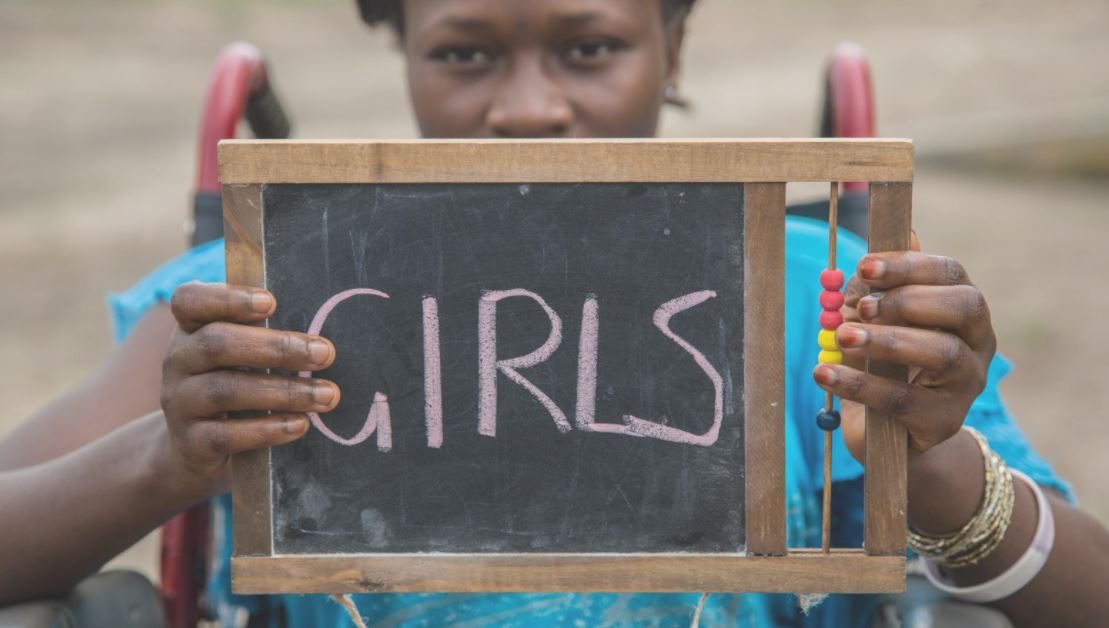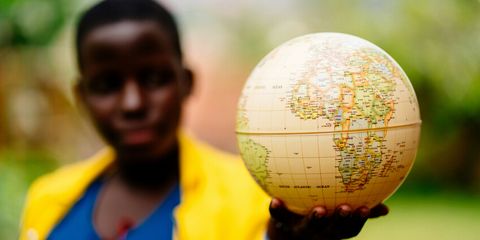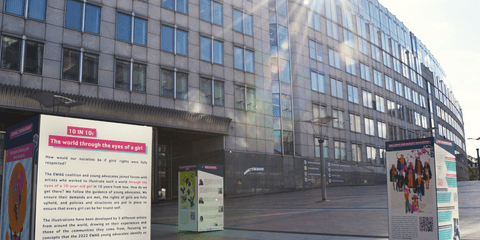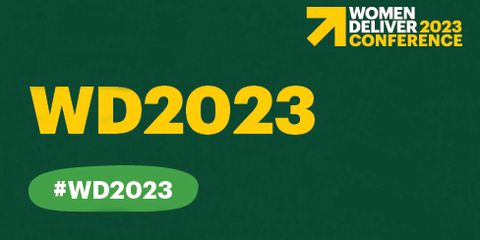The EU’s Gender Action Plan III
27 April 2020While the European Union’s Gender Action Plan II (GAP) ‘Gender Equality and Women’s Empowerment: Transforming the Lives of Girls and Women through EU External Relations 2016-2020’ is coming to an end, we would like its successor, the GAP III, to ensure further improvements. 2020 is a pivotal year when it comes to gender equality, and we are considering the new GAP as an opportunity for the EU to take a stand for girls and young women around the world.
While the European Union’s Gender Action Plan II (GAP) ‘Gender Equality and Women’s Empowerment: Transforming the Lives of Girls and Women through EU External Relations 2016-2020’ is coming to an end, we would like its successor, the GAP III, to ensure further improvements. 2020 is a pivotal year when it comes to gender equality, and we are considering the new GAP as an opportunity for the EU to take a stand for girls and young women around the world.
As an organisation working with and for children and youth, with a particular focus on girls, we believe that age as well as gender needs to be considered in all EU interventions and efforts targeting girls. Girls have specific needs that are different from those of adult women. We therefore, should go beyond the categories by which they are oftentimes defined, such as ‘children’ and women’. Plan International urges the European Commission to give specific attention to both the age-factor and gender while designing the future action plan. In addition, we would like the GAP III to take a gender transformative approach; beyond addressing symptoms to explicitly tackle the root causes of gender inequality, particularly unequal power relations, discriminatory social norms, policies and practices, and structural inequalities.
Finally, the GAP III needs to reflect the principle of intersectionality: girls and women are not all the same, and they experience inequality and discrimination differently according to their different identities: their age, their gender identity, their sexual orientation, etc.

What the next Gender Action Plan can do for girls’ lives
Ensuring girls’ and women’s physical and psychological integrity
One of Plan International’s priorities is ensuring that girls thrive and grow up equally valued and cared for, free from discrimination, violence and fear. We believe that tackling harmful social norms and unequal power dynamics is critical to ending all forms of GBV, and that the fight against SGBV needs to continue in both in development and humanitarian contexts. In addition, we consider it essential to be able to support girls in making their own informed choices and have control over their sexual and reproductive health and lives, without any coercion, violence or discrimination.
- Our Safer Cities projects aims to ensure safety for girls in public spaces, such as public transport and schools. For example, to achieve true gender equality, girls need to be able finalise their education. Ensuring their safety to attend their classes is therefore paramount.
Promoting economic and social rights and empowerment of girls and young women
Ensuring quality education for girls is a must, no doubt about it. The impacts of quality education for girls’ lives is nothing else but positive. As Plan International we are convinced that the power of education should not be underestimated. Through quality inclusive education with a crosscutting gender transformative approach we will be able to eradicate damaging gender stereotypes and generate positive references for girls that inspire them to pursue careers in STEM and management positions. Education is a fundamental right, yet in times of conflict and disaster it is often significantly disrupted, denying millions of girls and boys the opportunity to have a quality, safe education, as we are experiencing at the moment with the COVID-19 school closures. Guaranteeing access to education, including in these contexts, is key to their economic and social empowerment.
But just with education we won’t be able to fully unlock the power of girls. To achieve gender equality we need to make sure that girls all over the world will be able to shape their lives. For girls and young women to successfully transition into adulthood, guaranteeing their economic and social empowerment is a crucial step to make and this goes beyond providing them with access to quality and inclusive education. During girls’ childhood and adolescence this specific pillar of the GAP can see to it that girls have equal access to inheritance, access to birth registration, less unpaid care work through the promotion of shared responsibilities and investment in care services, access to financial and digital literacy, to technical and vocational education and training, and protection from child labour and all forms of exploitation. In addition, young women (aged 18-24) need access to financial assets, including credit and bank accounts; skills for business and entrepreneurship; and access to decent work and labour standards, including most recent standards from the International Labour Organisation on sexual harassment in the world of work.
- Our ‘SmartUp Factory’ in Uganda and Ethiopia is an innovation hub, training center and mentoring program, supporting skills and entrepreneurship. The content is largely driven by the youth and their interests. The project pays particular attention to empowering girls and women and bridging the (digital) gender gap.
Strengthening girls’ and women’s voice and participation
“Nothing about us, without us” that’s what this pillar is all about. Girls and young women all over the world are increasingly becoming more vocal about what they want, need, agree or disagree with. Not that this has been smooth sailing, the reason why lies in the unequal power relations between girls and boys and gender inequality in society which affect girls’ ability to speak out. Today, however, girls and young women increasingly participate in political life through informal structures and processes, online and offline. For the next GAP to be able to contribute to strengthen the voice and participation of girls, everywhere, there are a few things to be taken into account. Firstly, all voices count, might they come from rural or urban areas, be communicated on or offline, spoken in official or informal settings. Secondly, we need to respond to the different forms of violence girls and young women encounter when speaking out both on- and offline. We need to understand the different means girls’ and young women might have access to in order to speak out, not everyone will have the same literacy or access to digital tools to extend the reach of your voice. The next GAP should seek, in collaboration with partner countries, to better reach and support girls and young women’s agency and facilitate their role as active drivers of change, might it be through informal movements and forms of activism or formal structures, such as peace building initiatives in coherence with the Women and Youth Peace and Security agendas.
- Our Champions of Change methodology, which can be integrated into different projects and programmes, helps build the agency and capabilities of children and young people on gender equality, girls’ rights and influencing. It promotes social norm change through empowering girls, engaging boys, peer-to-peer mobilisation and intergenerational dialogue.
Backing up the GAP’s ambitions
Currently, the EU and Member States committed to reach the target of at least 85% of projects having gender equality as principal or significant objective (OECD marker G1 or G2) which contributed in the significant allocation of resources to gender equality and for example the introduction of the Spotlight Initiative. To ensure the ambitions of the new Action Plan are backed by the financial resources they would require, we insist for 85% of ODA to be allocated to programmes that actively contribute to that target of 85%. As part of this target, we would also like 20% of the programmes to have gender equality as a principle objective (G1), as these specific actions for gender equality are key to support the more general gender mainstreaming approach. These commitments must be reflected in Neighbourhood, International and Development Cooperation Instrument (NDICI) of the next EU long-term budget that is currently under negotiation. Finally, the EU needs to invest in human and technical expertise, in headquarters and in EU Delegations. For example, gender focal points are paramount to implement the Action Plan at country-level and to advise their colleagues on how to use the gender transformative approach in all areas of their work.
Tracking the GAP’s process
To be able to understand the magnitude of the impact the GAP will have on girls’ lives and realising gender equality, we need to make sure we are able to track progress accordingly. Monitoring and evaluation, including through the collection of disaggregated data, is key to be able to constantly adapt responses and to be able to tell the story of progress for gender equality through EU action. The GAP should contain clear, measurable, time-bound indicators, in line with the SDGs and include an allocation of responsibilities per the different actors contributing to its success – such as the European Commission and Member States. In order to promote gender equality with a life-cycle approach, we would welcome more specific indicators focused on girls under each of the thematic pillars and to collect data disaggregated by age, not only by sex, in initiatives and programmes implemented by the EU.
Our contribution to the GAP III consultation is based on inputs from 11 Plan Internatioal national offices and the collaboration of Equal Measures 2030.
plan international contribution to EU gender action plan III consultation
650.14 kb
Categories: Campaigns, Early childhood development, Education, Emergencies, Protection from violence, Sexual and reproductive health and rights, Skills and work, Youth empowerment


